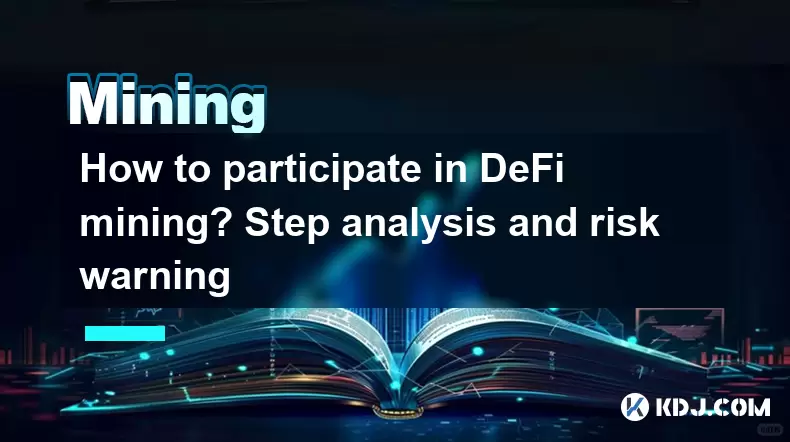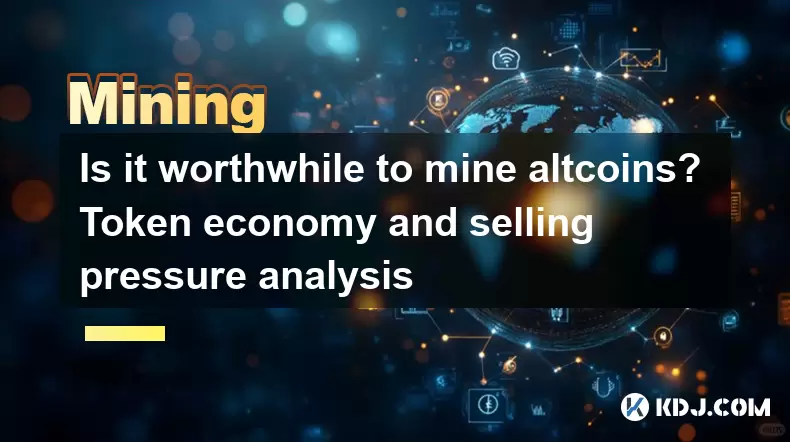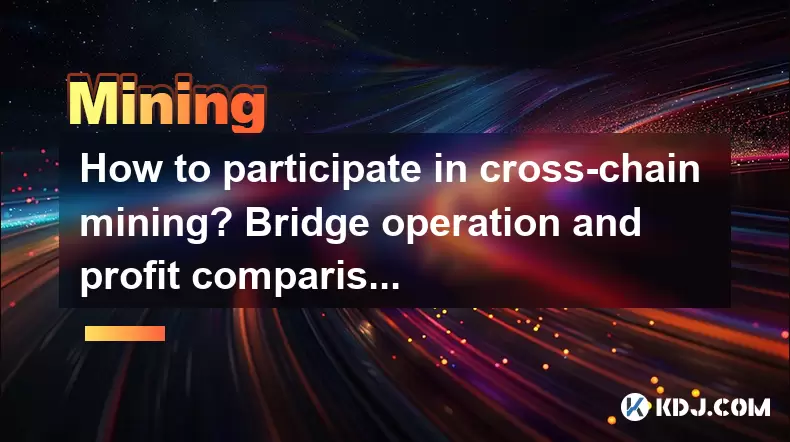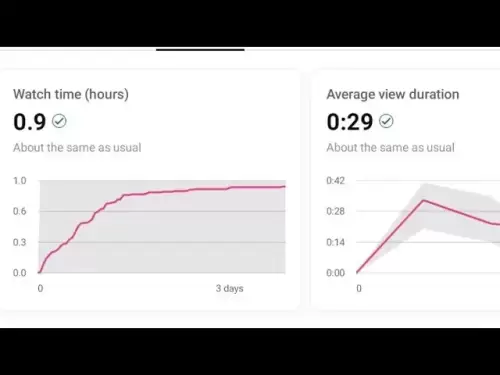-
 Bitcoin
Bitcoin $102,838.3669
-0.64% -
 Ethereum
Ethereum $2,288.9548
-5.70% -
 Tether USDt
Tether USDt $1.0003
0.01% -
 XRP
XRP $2.0782
-2.11% -
 BNB
BNB $632.3292
-1.65% -
 Solana
Solana $136.1959
-2.98% -
 USDC
USDC $1.0000
0.01% -
 TRON
TRON $0.2726
-0.11% -
 Dogecoin
Dogecoin $0.1566
-4.06% -
 Cardano
Cardano $0.5552
-5.18% -
 Hyperliquid
Hyperliquid $34.2720
-1.05% -
 Bitcoin Cash
Bitcoin Cash $466.8638
-1.20% -
 Sui
Sui $2.5776
-5.75% -
 UNUS SED LEO
UNUS SED LEO $8.9685
0.02% -
 Chainlink
Chainlink $12.0304
-5.11% -
 Stellar
Stellar $0.2375
-2.47% -
 Avalanche
Avalanche $16.9243
-3.74% -
 Toncoin
Toncoin $2.8539
-2.82% -
 Shiba Inu
Shiba Inu $0.0...01091
-4.04% -
 Litecoin
Litecoin $81.4197
-2.58% -
 Hedera
Hedera $0.1374
-5.25% -
 Monero
Monero $310.1410
-1.30% -
 Ethena USDe
Ethena USDe $1.0006
0.01% -
 Dai
Dai $1.0000
0.00% -
 Polkadot
Polkadot $3.2843
-5.48% -
 Bitget Token
Bitget Token $4.2110
-1.76% -
 Uniswap
Uniswap $6.4977
-7.96% -
 Pepe
Pepe $0.0...09321
-7.31% -
 Pi
Pi $0.5074
-6.27% -
 Aave
Aave $234.8342
-5.61%
How to participate in DeFi mining? Step analysis and risk warning
DeFi mining lets users earn rewards by providing liquidity to decentralized platforms, but involves risks like impermanent loss and smart contract vulnerabilities.
Jun 22, 2025 at 10:14 am

Understanding DeFi Mining
DeFi mining, also known as liquidity mining, refers to the process where users provide liquidity to decentralized finance protocols in exchange for rewards. These rewards are typically in the form of governance tokens or interest earned from transaction fees. Unlike traditional staking, DeFi mining often involves depositing funds into a liquidity pool on platforms like Uniswap, SushiSwap, or Curve Finance.
Users who participate in DeFi mining are called liquidity providers (LPs). By contributing their crypto assets to these pools, they enable traders and other users to swap between tokens seamlessly. In return, LPs earn a portion of the trading fees generated by the pool, along with additional token incentives issued by the protocol.
Step-by-Step Guide to Participate in DeFi Mining
Before diving into DeFi mining, it’s essential to understand each step thoroughly. Here is a detailed breakdown:
Set up a cryptocurrency wallet: Begin by installing a non-custodial wallet such as MetaMask or Trust Wallet. Ensure that you securely store your seed phrase and never share it with anyone.
Fund your wallet: Transfer the required tokens to your wallet. Most DeFi mining platforms require specific token pairs, such as ETH/DAI or USDC/USDT. Be sure you have enough of both tokens to contribute to the liquidity pool.
Connect to a DeFi platform: Visit platforms like Uniswap, SushiSwap, or PancakeSwap and connect your wallet using the "Connect Wallet" button located in the top right corner of the interface.
Select a liquidity pool: Browse available pools and choose one that aligns with your risk appetite and investment goals. Popular pools often offer higher liquidity and lower slippage.
Deposit your tokens: Input the amount of each token you wish to deposit. The platform will show you the percentage of the pool you’ll own and the expected yield.
Confirm the transaction: Approve the transaction via your wallet. This action requires paying gas fees, which can vary depending on network congestion.
Receive LP tokens: Once confirmed, you'll receive liquidity provider (LP) tokens representing your share in the pool. These tokens may be used in yield farming strategies or simply held to claim future earnings.
Risks Involved in DeFi Mining
While DeFi mining can be profitable, it comes with several risks that users should be aware of before participating:
Impermanent loss: This occurs when the value of your deposited assets changes compared to if you had simply held them. It's more pronounced in volatile token pairs.
Smart contract vulnerabilities: Bugs or exploits in the code of DeFi protocols can lead to the loss of funds. Always research whether the project has been audited.
Market volatility: Rapid price fluctuations can impact the returns and increase the risk of impermanent loss.
Rug pulls: Some projects may suddenly remove liquidity from the pool, leaving investors with worthless tokens.
Regulatory uncertainty: DeFi operates in a largely unregulated space, and future legal actions could affect accessibility and profitability.
Choosing the Right DeFi Platform
Not all DeFi mining platforms are created equal. When selecting where to allocate your funds, consider the following factors:
Platform reputation: Look for well-established protocols with a strong track record and transparent team information.
Total value locked (TVL): A high TVL indicates trust and usage, although it shouldn't be the sole deciding factor.
Audit status: Platforms that have undergone third-party audits tend to be more secure than those that haven’t.
Yield performance: Compare annual percentage yields (APY) across different pools, but remember that higher yields often come with higher risks.
Tokenomics: Understand how new tokens are distributed and whether there’s a risk of inflation diluting your rewards.
Best Practices for DeFi Miners
To minimize risks and maximize potential gains in DeFi mining, follow these best practices:
Diversify your investments: Avoid putting all your funds into a single pool or platform. Spread your capital across multiple projects to reduce exposure.
Monitor your positions: Regularly check your portfolio to ensure that your allocations still align with your strategy and that no sudden changes have occurred.
Withdraw earnings periodically: Compounding your rewards can be beneficial, but withdrawing and securing some profits reduces risk.
Stay informed: Follow official announcements, community discussions, and audit reports related to the protocols you’re involved with.
Use trusted tools: Utilize analytics platforms like Dune Analytics or DeFi Pulse to track performance and identify trends.
Frequently Asked Questions
Q: Can I lose money while participating in DeFi mining?
A: Yes, due to impermanent loss, smart contract risks, and market volatility, it's possible to lose money even if the platform appears legitimate.
Q: Is DeFi mining taxable?
A: In many jurisdictions, yes. Income from DeFi mining is generally considered taxable and must be reported according to local laws.
Q: What are LP tokens used for?
A: LP tokens represent your share of a liquidity pool. They can be staked in yield farms or transferred, but losing them means forfeiting your liquidity position.
Q: How do I calculate impermanent loss?
A: Impermanent loss depends on the price change ratio of the two assets in the pool. Several online calculators allow you to input price changes and estimate the impact on your holdings.
Disclaimer:info@kdj.com
The information provided is not trading advice. kdj.com does not assume any responsibility for any investments made based on the information provided in this article. Cryptocurrencies are highly volatile and it is highly recommended that you invest with caution after thorough research!
If you believe that the content used on this website infringes your copyright, please contact us immediately (info@kdj.com) and we will delete it promptly.
- Bitcoin in Europe: France's Budding Romance with BTC
- 2025-06-22 12:45:12
- BNB Chain Altcoin Meltdown: Navigating the Storm and Spotting Opportunities
- 2025-06-22 12:45:12
- Inherited Riches: Rare Coin Collection Valued at £6,000 – Is Your Change Worth a Fortune?
- 2025-06-22 12:25:12
- Fiat-Backed Stablecoins, Tokenized Treasuries, and DeFi: A New York Minute on the Future of Finance
- 2025-06-22 12:25:12
- Pumpfun Token Launch Faces Crypto Backlash: A Billion-Dollar Gamble?
- 2025-06-22 12:50:12
- Pepe Coin Price Prediction: Crash Risk and What's Next for Frog-Themed Crypto
- 2025-06-22 13:05:13
Related knowledge

What is liquidity mining in DeFi? How to participate and calculate the income?
Jun 20,2025 at 03:21pm
Understanding Liquidity Mining in DeFiLiquidity mining is a core concept in the decentralized finance (DeFi) ecosystem that allows users to earn rewards by providing liquidity to decentralized exchanges (DEXs) or lending platforms. In traditional finance, liquidity providers are usually institutional players, but DeFi democratizes this process, enabling...

How to operate option mining? Hedging strategy and profit structure
Jun 21,2025 at 03:29pm
What is Option Mining?Option mining refers to a decentralized finance (DeFi) strategy where participants provide liquidity or take specific derivative positions in options protocols to earn rewards. Unlike traditional yield farming, option mining often involves liquidity provision for options markets, allowing users to generate returns through premiums ...

What are the advantages of Layer2 mining? Gas saving and project inventory
Jun 20,2025 at 04:50am
Understanding Layer2 Mining and Its SignificanceLayer2 mining refers to the process of participating in decentralized applications or protocols that operate on top of a primary blockchain (such as Ethereum) using scaling solutions like Optimism, Arbitrum, or zkSync. Unlike traditional mining on Layer1 blockchains, which often involves high computational...

Is contract mining safe? Key points of smart auditing and vulnerability prevention
Jun 19,2025 at 08:08pm
Understanding Contract Mining in the Cryptocurrency SpaceContract mining refers to a method within blockchain ecosystems where users can participate in mining operations through smart contracts. Unlike traditional mining, which requires physical hardware and technical expertise, contract mining allows participants to invest funds into a mining pool or p...

Is it worthwhile to mine altcoins? Token economy and selling pressure analysis
Jun 20,2025 at 05:21pm
Understanding the Altcoin Mining LandscapeMining altcoins has become an attractive alternative to Bitcoin mining for many cryptocurrency enthusiasts. With Bitcoin's increasing difficulty and energy requirements, miners are seeking opportunities in less saturated markets. However, the profitability of mining altcoins depends on several factors, including...

How to participate in cross-chain mining? Bridge operation and profit comparison
Jun 19,2025 at 05:42pm
What is Cross-Chain Mining?Cross-chain mining refers to the process of leveraging blockchain bridges or interoperability protocols to move assets between different blockchains and participate in yield farming, staking, or liquidity provision across multiple ecosystems. Unlike traditional single-chain DeFi activities, cross-chain mining allows users to o...

What is liquidity mining in DeFi? How to participate and calculate the income?
Jun 20,2025 at 03:21pm
Understanding Liquidity Mining in DeFiLiquidity mining is a core concept in the decentralized finance (DeFi) ecosystem that allows users to earn rewards by providing liquidity to decentralized exchanges (DEXs) or lending platforms. In traditional finance, liquidity providers are usually institutional players, but DeFi democratizes this process, enabling...

How to operate option mining? Hedging strategy and profit structure
Jun 21,2025 at 03:29pm
What is Option Mining?Option mining refers to a decentralized finance (DeFi) strategy where participants provide liquidity or take specific derivative positions in options protocols to earn rewards. Unlike traditional yield farming, option mining often involves liquidity provision for options markets, allowing users to generate returns through premiums ...

What are the advantages of Layer2 mining? Gas saving and project inventory
Jun 20,2025 at 04:50am
Understanding Layer2 Mining and Its SignificanceLayer2 mining refers to the process of participating in decentralized applications or protocols that operate on top of a primary blockchain (such as Ethereum) using scaling solutions like Optimism, Arbitrum, or zkSync. Unlike traditional mining on Layer1 blockchains, which often involves high computational...

Is contract mining safe? Key points of smart auditing and vulnerability prevention
Jun 19,2025 at 08:08pm
Understanding Contract Mining in the Cryptocurrency SpaceContract mining refers to a method within blockchain ecosystems where users can participate in mining operations through smart contracts. Unlike traditional mining, which requires physical hardware and technical expertise, contract mining allows participants to invest funds into a mining pool or p...

Is it worthwhile to mine altcoins? Token economy and selling pressure analysis
Jun 20,2025 at 05:21pm
Understanding the Altcoin Mining LandscapeMining altcoins has become an attractive alternative to Bitcoin mining for many cryptocurrency enthusiasts. With Bitcoin's increasing difficulty and energy requirements, miners are seeking opportunities in less saturated markets. However, the profitability of mining altcoins depends on several factors, including...

How to participate in cross-chain mining? Bridge operation and profit comparison
Jun 19,2025 at 05:42pm
What is Cross-Chain Mining?Cross-chain mining refers to the process of leveraging blockchain bridges or interoperability protocols to move assets between different blockchains and participate in yield farming, staking, or liquidity provision across multiple ecosystems. Unlike traditional single-chain DeFi activities, cross-chain mining allows users to o...
See all articles
























































































